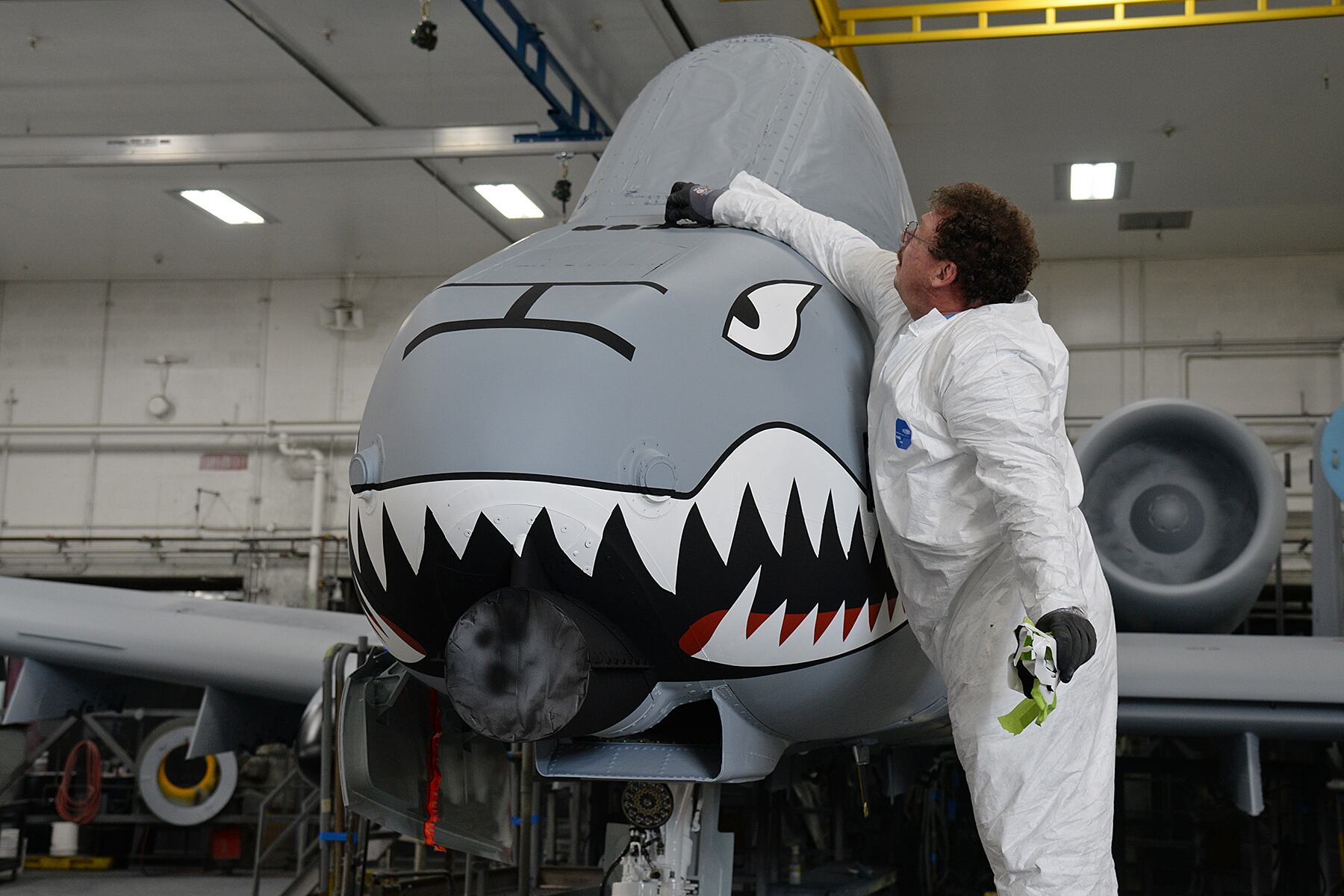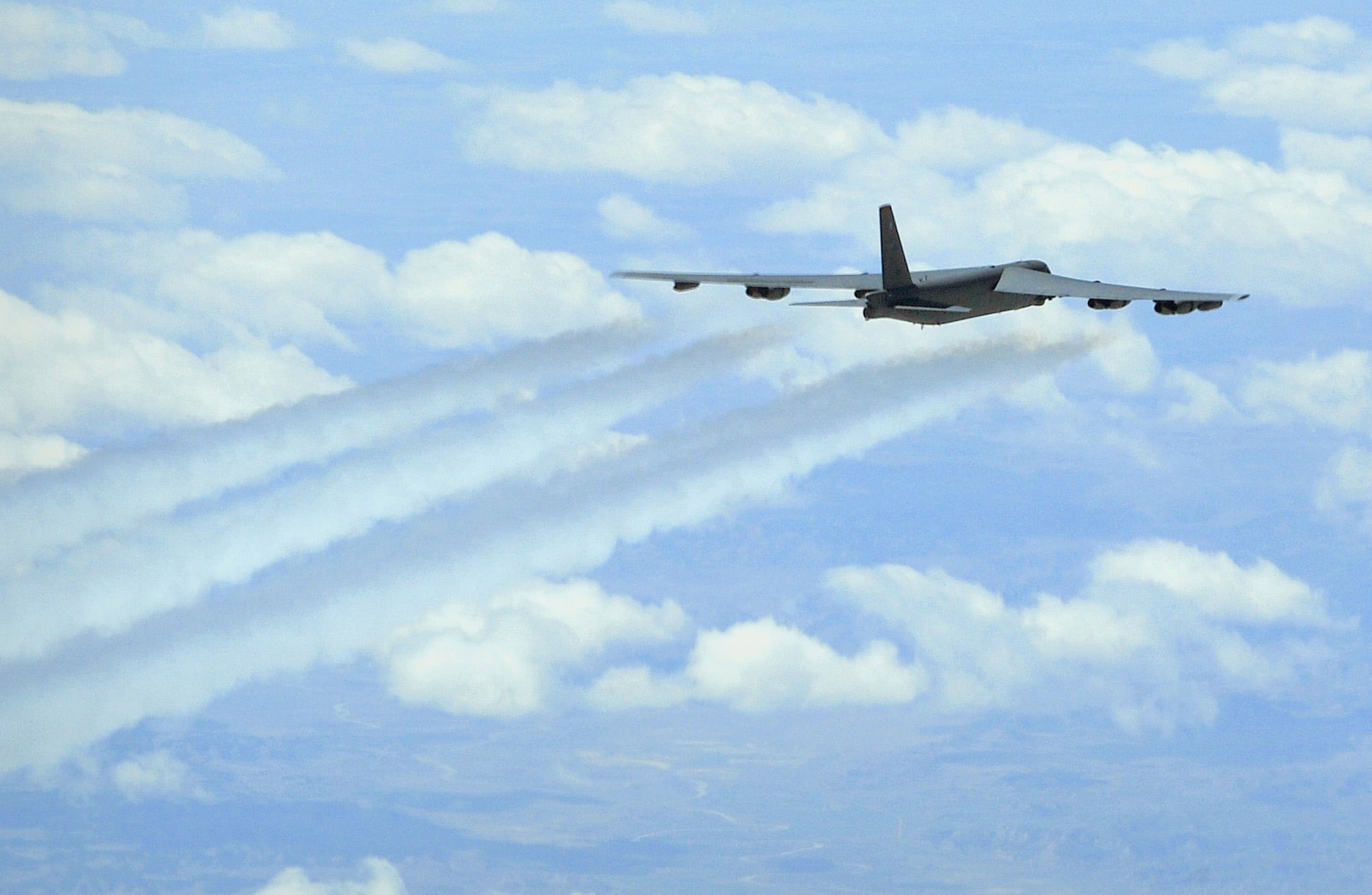BARKSDALE AIR FORCE BASE, La., and WASHINGTON — After several months of delays, the U.S. Air Force is hoping to release a request for proposals for new B-52 bomber engines by the end of 2019, once the service gets the chance to solidify its solicitation and answer congressional concerns.
But at Barksdale Air Force Base in Louisiana, B-52 maintainers are hungry for new motors that will hopefully lessen the time it takes to diagnose and fix engine problems.
“If I was to prioritize the systems from a maintainer’s point of view, in my personal opinion — not the Air Force’s obviously — but [replacing] the engines first and foremost” would have the most positive impact on the maintenance community, said Lt. Col. Tiffany Arnold, 2nd Maintenance Squadron commander. Arnold spoke with journalist and Defense News contributor Jeff Bolton during a visit to Barksdale AFB.
Each B-52 uses eight TF33 engines to fly, which means maintainers spend a lot of time ensuring each engine functions properly. And when more than one engine needs repairs, that entails more work for the personnel that are already performing multiple assessments, Arnold said.
Click here for more from the special report on the U.S. nuclear enterprise.
The Air Force believes it can reduce fuel burn and cut down the number of hours needed to maintain the B-52 by swapping the TF33s with eight new, off-the-shelf engines.
It’s a discussion that’s been going on for more than 30 years, said Alan Williams, deputy B-52 program element monitor with Air Force Global Strike Command.
“The B-52 was going to be retired in 1996, and then the date slid to 2000, then it slid to 2003, then it went finally to 2040 and now it’s 2050,” he said in an August interview. “The extended life has finally given us the green light for upgrades we’ve been looking at for 20 or 30 years but could never get funded.”
RELATED

The RFP, which was originally scheduled for release in March, has been pushed to the end of 2019, he added. A contract award to a single engine manufacturer is scheduled about a year later. Once that happens, the winning engine will move through a typical design and test phase, culminating in the integration of new engines on two B-52s for flight tests around 2023 or 2024.
Williams acknowledged the delay was partially caused by House lawmakers’ concerns about the Air Force’s acquisition strategy. At issue is the service’s decision to award contracts for prototyping work before requirements and cost estimates were finalized, and the House Armed Service Committee wants to require the Air Force to submit additional documentation on the schedule and cost of the effort.
“Right now they are working through the process, trying to answer all of the questions that both leadership in the Air Force have and Congress has,” Williams said. “There is no particular reason for the delay other than just getting through the wickets.”
B-52 prime contractor Boeing and the three potential engine providers — General Electric, Rolls Royce, and Pratt & Whitney — are under contract for the initial prototype phase of the competition, which will culminate in November with each manufacturer creating an initial digital design specifying how their respective engine would integrate with the B-52.
Incumbent Pratt & Whitney now plans to offer the PW815, but the company has also advocated a life extension for the existing TF33s as an alternative to buying new engines. Rolls-Royce will offer a version of its the F130 engine and has promised to build a manufacturing facility in Indianapolis, Indiana, if it wins the B-52 re-engine effort. Meanwhile, GE Aviation indicated it could put forward either the CF34-10 or its Passport engines.

The level of detail of the virtual prototypes won’t reach the level of a preliminary design, said Jim Kroening, Boeing’s B-52 modernization program manager, but it will provide the Air Force with a better idea of how the four candidate engines will mate with the cowling that surrounds the engine and the strut that attaches the engine to the wing.
“Using digital modeling, [we] also try to understand what the performance of the engine [is],” he said. “So understanding whether the missions can replicate what the B-52 can do today and also understand what the life cycle reliability, maintainability impacts are.”
Since the TF33 engines were developed in the late 1950s, they are not outfitted with the sensors of modern engines, which can monitor the health of the system or diagnose a problem before it occurs, Arnold said at Barksdale AFB.
“We may see an indicator of an issue, but we don't know how long until it's going to fail until it actually does. In my world, we would like to prevent the failure from interrupting scheduled training or a mission,” she said.
“I would like to know if I need to take that aircraft down out of the schedule and give it a new engine ahead of time,” she added. “We could prioritize, we could understand the patterns of the engines in a way that we could maintain them better. And hopefully the new motor, whoever designs it, will have a shorter mean time between failure, and we can fly them longer.”
Senior Airman Gregory Gatdula, a jet engine mechanic, said that the age of the TF33 makes working on the motors “very troublesome” despite the reliability of the B-52 as a whole.
“We’re usually able to pinpoint certain things, but most of the time it’s random,” he said. “These engines don’t have anything that can help us troubleshoot it besides our manual [technical orders]. So getting a new engine with something that can help us determine what might be right or wrong with the engine could definitely help us out a lot.”
New generators?
While most of the focus of the B-52 re-engine effort has been on the engines themselves, Kroening noted that the Air Force might also outfit each engine with new generators as part of the program — a change that would give the B-52 a boost of power needed for emerging technologies like hypersonic, laser or the long-range standoff weapons.
RELATED

“Right now, on the B-52, there are four generators — one on every other engine,” he said. “Our design intent is to attach a generator to each engine, perhaps a smaller generator, that will overall increase the capacity.”
But Williams said the Air Force is still working to understand future electronic needs and there is no firm decision on the generator topic.
“As you pull power from the engine to run a generator — or alternator or any other accessory that goes on the engine — you have to take some percentage of the power of the engine away from it producing thrust to fly the aircraft,” he said. “All of those are trade-offs.”
Valerie Insinna is Defense News' air warfare reporter. She previously worked the Navy/congressional beats for Defense Daily, which followed almost three years as a staff writer for National Defense Magazine. Prior to that, she worked as an editorial assistant for the Tokyo Shimbun’s Washington bureau.








